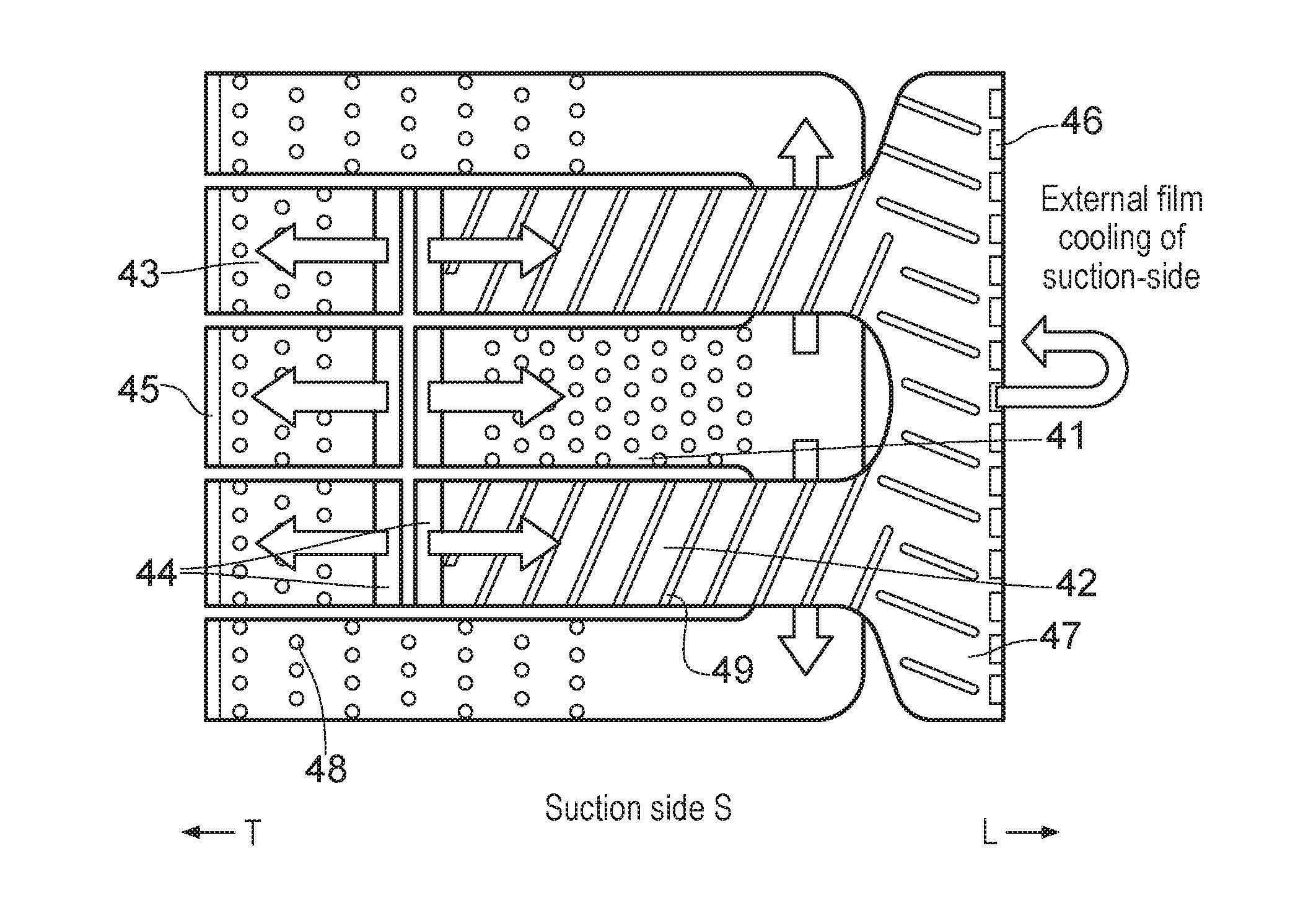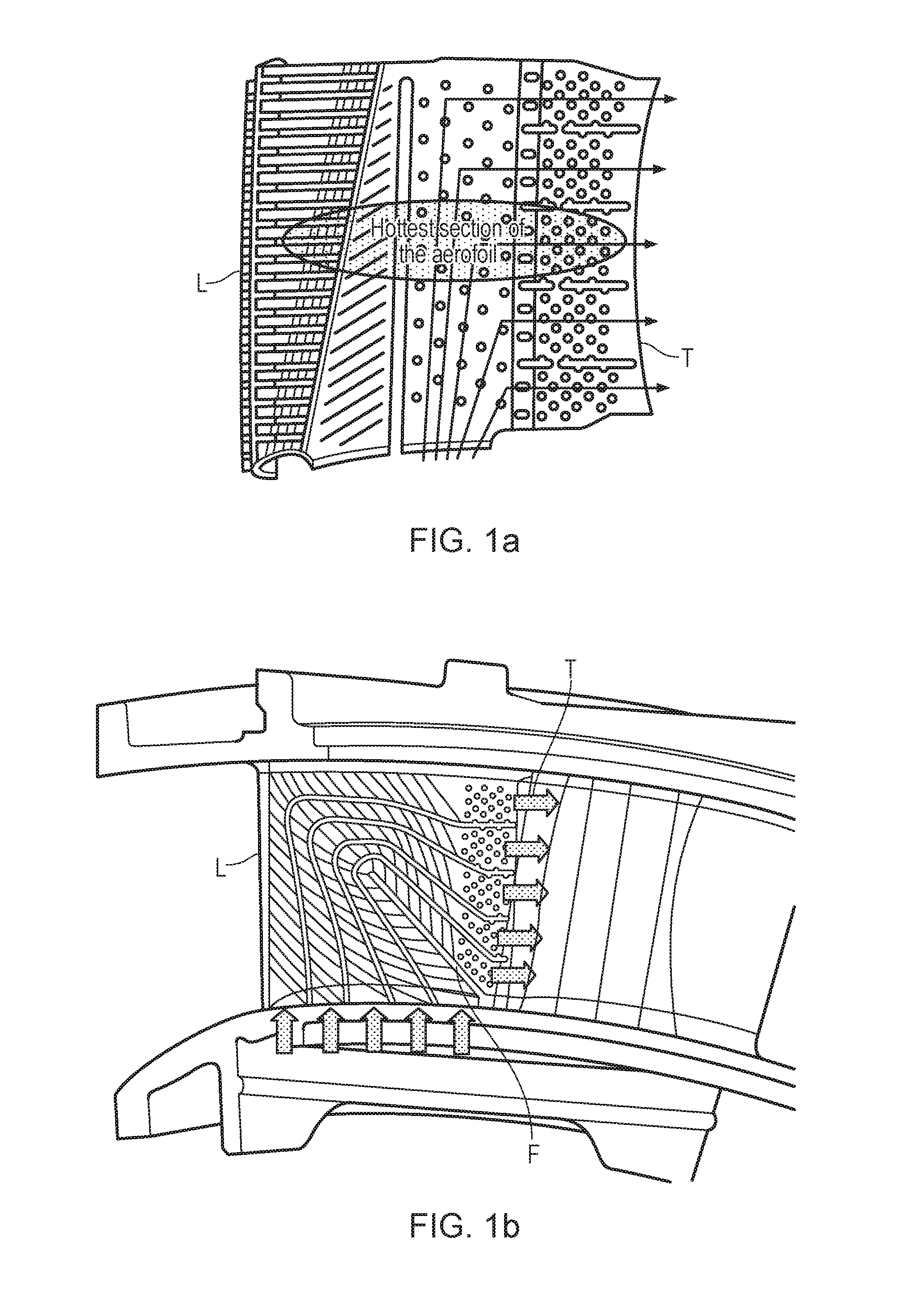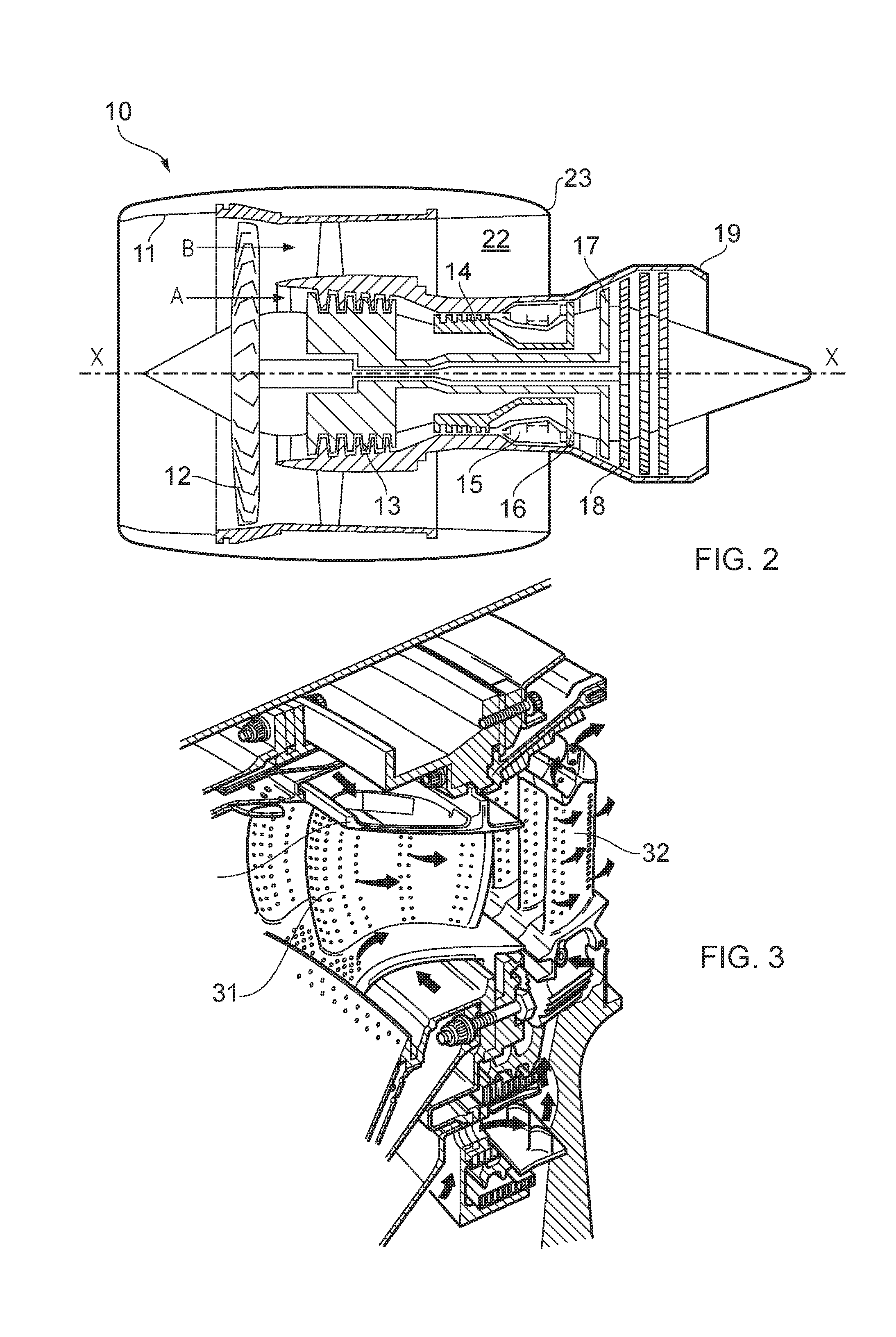Aerofoil blade or vane
a technology of aerofoil and blades, which is applied in the direction of liquid fuel engines, vessel construction, marine propulsion, etc., can solve the problems of un-cooled turbine life falling, cooling air from the compressor that is used to cool the hot turbine components is not used fully to extract work from the turbine, and the cooling effect of coolant is least effective, so as to achieve the effect of maximising the area available for the reverse-pass coolant passages
- Summary
- Abstract
- Description
- Claims
- Application Information
AI Technical Summary
Benefits of technology
Problems solved by technology
Method used
Image
Examples
Embodiment Construction
[0048]Internal cooling designs for aerofoils, such as for a blade or vane for a turbine of a gas turbine engine, are presented below. Each design incorporates a significant amount of ‘reverse-pass’ coolant flow (i.e. coolant inside the aerofoil that flows from the trailing-edge towards leading-edge, which is in the opposite direction to the mainstream flow outside the aerofoil). That reverse-pass coolant flow is preferably on the suction-side wall of the aerofoil. There are significant advantages associated with these reverse-pass systems, including (a) improved cooling efficiency, i.e. less coolant is needed to achieve cooling to the same maximum wall temperature, or a smaller maximum wall temperature is achieved for the same amount of coolant, and (b) more uniform wall temperatures in the axial direction, which in turn reduces thermal stresses. The designs presented seek to maximise the number and / or length of reverse-pass portions, whilst satisfying manufacturability and pressure...
PUM
 Login to View More
Login to View More Abstract
Description
Claims
Application Information
 Login to View More
Login to View More - R&D
- Intellectual Property
- Life Sciences
- Materials
- Tech Scout
- Unparalleled Data Quality
- Higher Quality Content
- 60% Fewer Hallucinations
Browse by: Latest US Patents, China's latest patents, Technical Efficacy Thesaurus, Application Domain, Technology Topic, Popular Technical Reports.
© 2025 PatSnap. All rights reserved.Legal|Privacy policy|Modern Slavery Act Transparency Statement|Sitemap|About US| Contact US: help@patsnap.com



